Site Links
Howdy, Stranger!
It looks like you're new here. If you want to get involved, click one of these buttons!
Quick Links
Categories
Who's Online (0)
USB interface comparison - Steinberg UR22mkii vs Motu M4
I've been using the Steinberg UR22mkii for all my speaker measuring needs for the past few years and its served me well. I found a Motu M4 available locally though for a good price so I thought I'd take the opportunity for an upgrade, and compare the two units while I'm at it.
For an apples to apples comparison, I set the output of both units to 1.2V. This is somewhat arbitrary, but also provides about -3dBFS on the Steinberg with the input gain knobs at 12 o'clock which is how I generally start with it when I use it.
Checking the output on the Steinberg it gets a bit weird. It has a TRS output but was only providing an unbalanced signal. Tip at 1.2V, ring and sheild were 0V. Hmm, wierd, though not so much of an issue since I generally adapt the signal for RCA connection to an amplifier anyway. I didn't troubleshoot it at all, but did compare the Motu both balanced and unbalanced at 1.2V using both the TRS and RCA outputs available. The Motu did provide a balanced signal on the TRS output.
I'll mention as well that the input gain on the Motu appears to be a fair bit higher, as I only needed about 9 o'clock position on the input knobs for the same -3dBFS signal. As well, the unbalanced test used a different cable (RCA with TS adapter), while the Motu balanced and Steinberg test both used the same pair of TRS patch cables for the loopback.
This simple comparison was completed using Rightmark Audio Analyzer. Both units were tested at 24/96. Nevermind the typo in the titles.
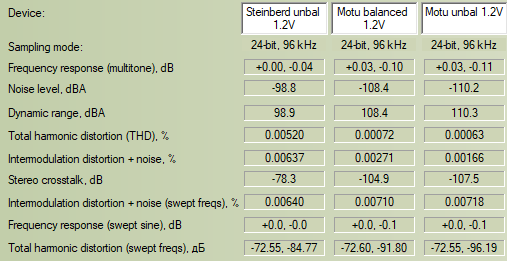
Frequency Response. Point Steinberg.
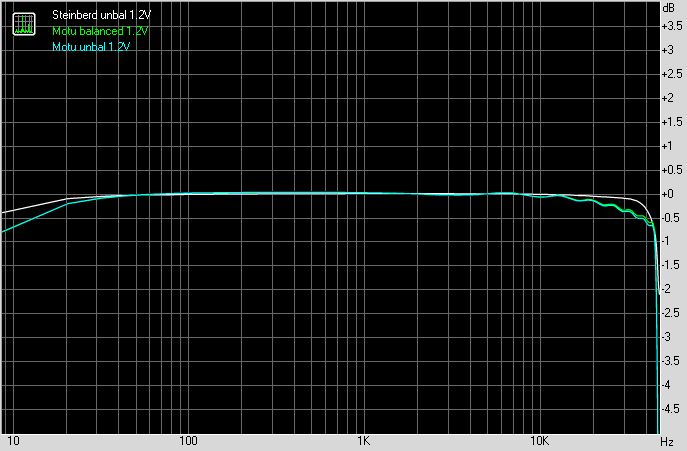
Noise. Point Motu.
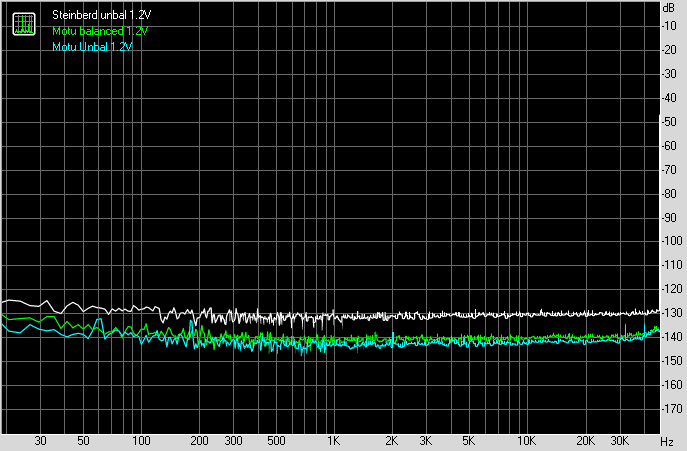
THD 1kHz. Point Motu. Steinberg is dominated by 2nd and 3rd harmonic, 6th+ harmonics are non-existent on the Steinberg where they do appear on the Motu.

IMD. Point Motu.
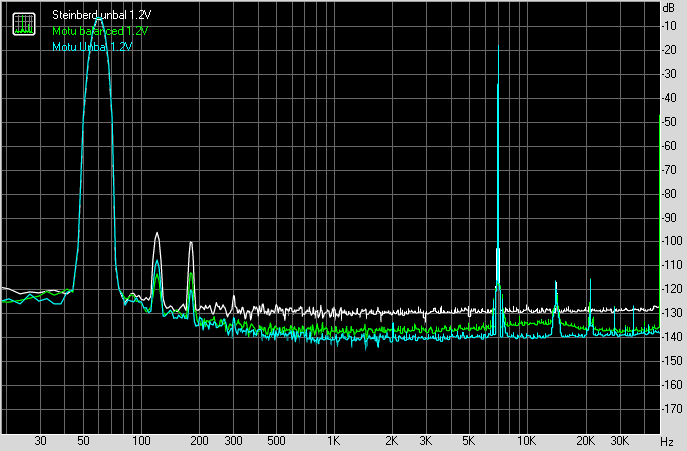
Crosstalk. Point Motu.
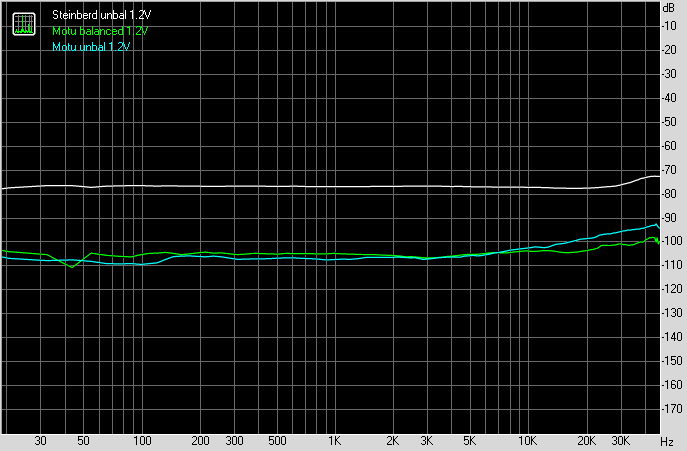
The frequency response of the Motu is unfortunate, the Steinberg is much better in this regard, but otherwise the Motu Excels in raw performance in this loopback D/A and A/D comparison. Both are very capable units, one is just a bit better ![]()




Comments
So, a virtual tie as far as usability goes?
Apart from the electronic performance, mechanically both are pretty solid, though I think the Steinberg is a bit more "tour grade". The Steinberg is a steel chassis that is easily serviced, just 4 Philips screws on the bottom will get you in. Motu on the other hand is a lighter aluminum case and assembled with some torx bs, I don't have a small enough bit in my stash to get in and see how it looks on the inside. I do like the knurled knobs, and the large volume knob on the Motu has a nice feel, and of course the LCD level indicator is a step up from a simple clipping LED. Motu doesn't have a "high Z" switch for direct guitar input, I guess it must be auto-sensing, I haven't looked into it.
Inside the Steinberg UR22mkii is a well constructed unit with quality components. Nichicon and Elna capacitors in use. NXP interface and the audio codec is a CS4270. Looks like a JRC 2068 op-amp on the input side, and NE5532 on the output side.
For the input connectors the Steinberg uses Neutrik, Motu uses Amphenol, both are quality components.
They both do the same thing at the end of the day. The M4 is a bit more versatile, having level indicators on the unit, 2 more inputs and 2 more outputs, and RCA connectors for use with "home" audio equipment is a handy feature to avoid the use of a TRS to RCA adapter.
Guts of the Motu courtesy of ASR because I don’t have a tiny little torx screwdriver.
Interesting comparison. I'm surprised the Steinberg outputs are not really balanced. But I guess budget interfaces like these were never meant to drive really long cable runs. Unlike a lot of these devices, this looks somewhat serviceable down the road. Nice to see lots of FG series caps in there!
Virtex label on the Motu board - could these have been built right here in the US? I've always thought Motu to be a really solid brand. Loved my old Pci424/2408 setup. It took a beating as a live rig, sounded great and never missed a beat. I tried to buy an M2 interface when they first came out but they were out of stock everywhere.
Motu is “assembled in USA”
At least with the Steinberg UR22mkii, the unbalanced output is clear in the block diagram in the manual. However, the manual has an error, connecting the signal to both tip and ring is incorrect, and will provide zero signal when connected to a balanced input. Ring should be grounded, and it looks like they caught that error in the newer UR22C model.
UR22mkii block diagram. Balanced input, unbalanced output.
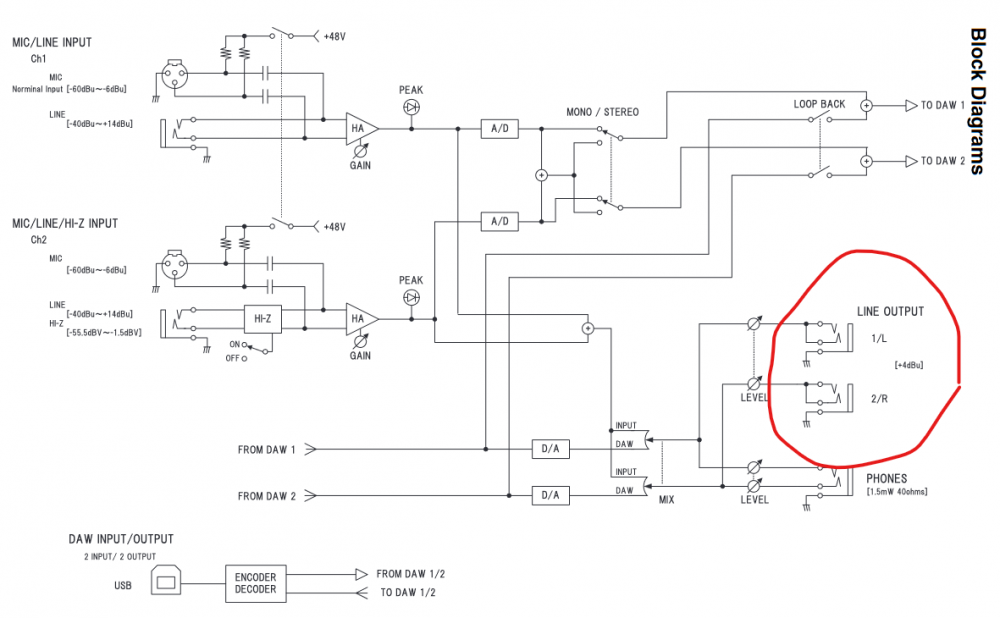
UR22C for schematic accuracy:

A bit more detailed distortion analysis with ARTA today. Here I compared at 2V output, and adjusted the input gain aiming for -3dB but ended around -2.5dB.
Steinberg UR22mkii.
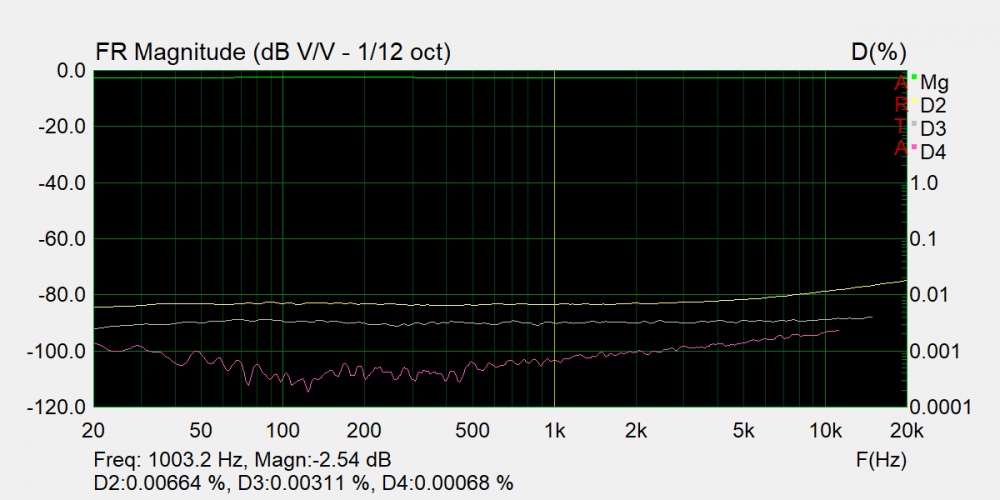
Motu M4.
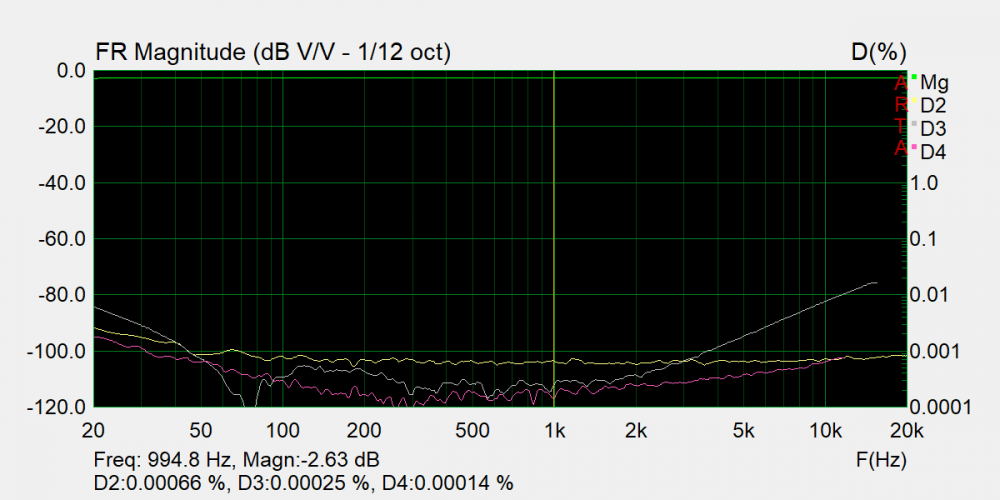
Those both look really good. I wonder how a vintage Neve channel strip would measure?
With distortion and noise as low as it is with the Motu, I imagine I can evaluate a lot of electronic performance, just need some load resistors for amplifier evaluations.
Glad that I purchased the MOTU M2
I wonder how the Roland Rubix22 USB Audio Interface, 2-In/2-Out that Ivo mentions compares?